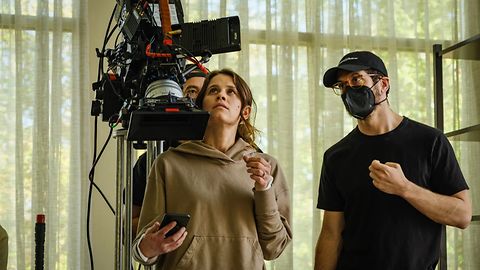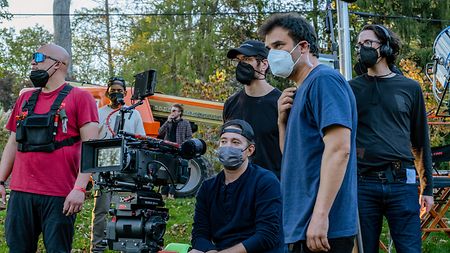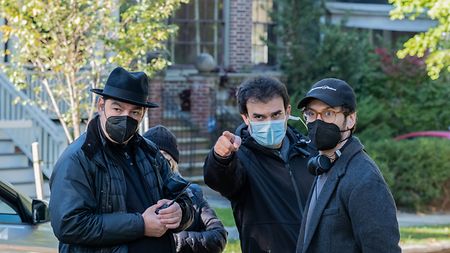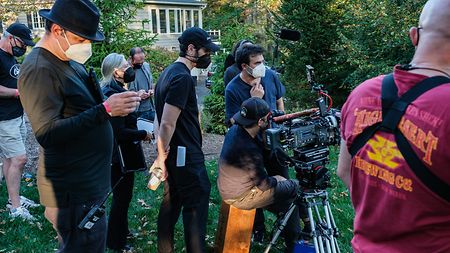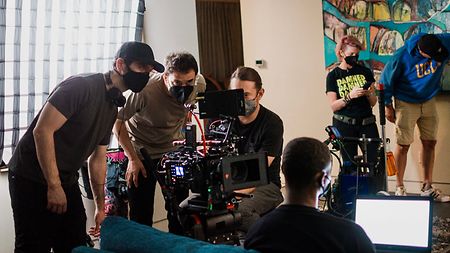“Smile” stars Sosie Bacon as Rose Cutter, a therapist who descends into a terrifying spiral of supernatural fear and hallucination after witnessing the suicide of a patient. The directorial debut of Parker Finn, “Smile” has grossed well over $200 million against a $17 million budget, garnering praise for its visuals and performances. Cinematographer Charlie Sarroff turned to ARRI Rental US for the New Jersey shoot, opting to work primarily in the 65 mm format with the ALEXA 65 camera and Prime DNA lenses.
What drew you to this project?
I was inspired to shoot “Smile” after meeting Parker and hearing his passion and vision for the project. When I read the script, I found it to be a page-turner – a fun, gory, intense, and sometimes even humorous adventure that offered the opportunity to play around with things visually, so I was excited to come onboard when it was offered to me.
How did you chart the main character’s gradual breakdown visually, and were you inspired by any classic horror films?
Yes, classic horror films were a big influence on Parker and me, and definitely inspired us when developing the look, feel, and tone of “Smile.” Films that come to mind are “Possession,” directed by Andrzej Żuławski; “Safe,” directed by Todd Haynes; Stanley Kubrick’s “The Shining;” and “The Ring,” directed by Hideo Nakata and Gore Verbinski.
We utilized different pacing, camera techniques like handheld, wide lenses, and darker light as Rose, played by the talented Sosie Bacon, descended deeper into despair. We also never used over-the-shoulder shots because we always wanted Rose to be alone and isolated.
Why did you choose the ALEXA 65 as your main camera?
The main deciding factor behind choosing the ALEXA 65 was the camera's ability to maintain a more natural perspective when filming close to subjects on very wide lenses. You don't get nearly as much of the distortion as you do on smaller sensors.
We wanted to create a feeling of unease and anxiety, and to be very up-close and personal to Rose and her journey. At the same time, we wanted the audience to feel and see the environment around her and make Rose feel small and vulnerable within it. Shooting on the ALEXA 65 helped us achieve this, as we could capture such a large field of view but maintain a fairly normal perspective on Rose when in very close to her. The camera is also exceptional in low light, and we just loved the way ARRI sensors capture color and skin tones, whilst having a filmic feel.
You also carried an ALEXA Mini LF – how did you combine that with the ALEXA 65?
We used the ALEXA 65 for I’d say about 90% of the film. Parker and I approached the film with a single-camera mindset. The Mini LF was used on drone shots and then if we had a VFX stitch between the drone and another shot on the ground, we would stay on the Mini LF so that the sensors and lenses matched.
There are a few scenes where the Mini LF played as a B-camera, like the prison scene with Rob Morgan. And there are some Steadicam shots where it being more lightweight really helped us out. Both cameras marry well together, and I think it's a great A/B combo if you’re wanting to use the 65 for the majority of the film but also allow for some flexibility if a smaller camera body is going to be more helpful.
What were your lens choices on the film?
We shot primarily on the Prime DNA lenses. I love a lot of the characteristics you get from vintage lenses and was really impressed by how the Prime DNAs capture skin tones. They are still sharp but not clinical, and quite fast, which helped us in low light conditions. The ALEXA 65 is a very clean camera due to its sensor size and fine grain, so teaming it up with the DNAs helped give the image a little more character.
The DNA lens sets can be mixed and matched depending on what look you are going for. They are pieced together and rehoused from older vintage glass sets, but they’re totally workable and you get a lot of flexibility when using them, even if you don’t have the time and budget in prep to tune them. Occasionally we would jump to a zoom lens, but the vast majority of the film was shot on the DNAs, and we tended to stay on the wider side. The 28 mm and the 65 mm were used a lot. Being on the ALEXA 65, the 28 mm translated to being a very wide lens with minimal distortion, and the 65 mm was a great portrait lens.
The sound design and cinematography work very well together – what was behind this?
Sound design and score is an extremely important and central element to filmmaking, and Parker did a great job working with very talented artists like our composer Cristobal Tapia de Veer. Parker definitely had the soundscape in mind when creating the visual language. Cristobal would often send Parker parts of the work-in-progress score that we would listen to, and it certainly influenced the way we shot.
Did you create any LUTs for the film? What was the focus of your work in the final grade?
We worked closely with colorist David Cole at FotoKem in creating a LUT. We knew a lot of the scenes particularly at the end of the film would be quite dark, so he helped us by building about half a stop of latitude in the shadows of the LUT. Essentially, I would overexpose everything by half a stop, and we would monitor it as we wanted to see it on set knowing that we had some room to move in the shadows during the final color grade if needed.
Our approach to the final grade was creating a filmic look and we were fortunate to be able to print to film and scan back – a process at FotoKem called SHIFTai. We loved bringing some celluloid into the vision as it gave us a lively feel, bloomy highlights, softer skin tones, and interesting imperfections. I love merging new and old technology.
